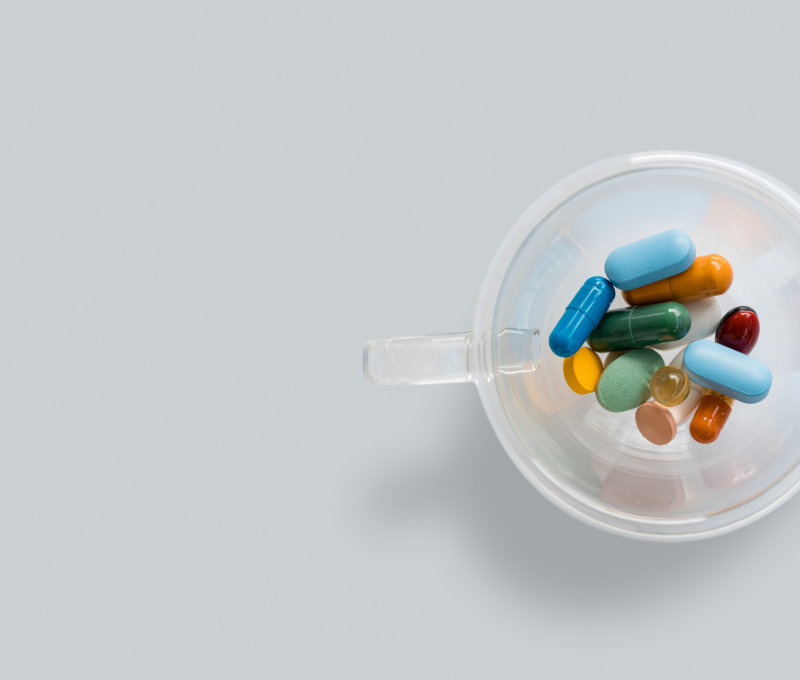OSTEOPOROSIS
OSTEOPOROSIS
Looking for a helpful guide to Osteoporosis? You’re in the right place! We’ve assembled this succinct and straight-forward guide to Osteoporosis packed with helpful information answering some of the most frequently asked questions regarding this health condition.
A GUIDE TO OSTEOPOROSIS
A GUIDE TO OSTEOPOROSIS
If your bones are being described as honeycomb that is never a good thing as it means you could have osteoporosis. This honeycomb appearance occurs when the body loses too much bone, makes too little bone or both. Ultimately, the bone becomes weak and may break from something as simple as a fall or as minor as sneeze. It is a scary disease to think your bones are so fragile a simple wrong move can be catastrophic. Early diagnosis always helps from a prevention standpoint and there are many things you can do to help prevent this disease from becoming catastrophic.
WHAT IS OSTEOPOROSIS?
Osteoporosis is a bone disease in which the density and quality of bone regeneration cannot keep up with the body. With osteoporosis the body may lose too much bone, make too little bone or both. Our bones are a living tissue that constantly break down and regenerate. With osteoporosis this natural cycle cannot keep up and the bones in the body ultimately become weak and brittle to the point where they may break from a fall or even from coughing and/or sneezing. As we age our bone cells begin to dissolve bone matrix and new bone cells deposit.
When looking at the bones of a person suffering from osteoporosis they appear to be “porous” and have holes/spaces in them compared to a healthy bone, which looks like a honeycomb. The loss of bone occurs silently, unnoticed and progressively until something more severe such as falling happens. Oftentimes there are no symptoms until a bone is fractured. Once a bone has been weakened some symptoms may occur such as: back pain, loss of height, stooped posture and fragile bones. The most common injuries occur at the hip, spine or wrist and the likelihood of these injuries occurring increase with age. People over the age of fifty are most susceptible to developing osteoporosis. Medications, a healthy diet, proper water intake, and strength training exercises can all help prevent bone loss or strengthen already weak bones.


WHAT CAUSES OSTEOPOROSIS?
As with any disease there is a risk of osteoporosis being caused by: family history, ethnicity, age and gender. However there are a few more apparent causes with osteoporosis such as:
- Hormone levels – our hormones influence the natural bone remodeling process (the process in which old bone is broken down and replaced with new bone) if hormones are out of sync the bone remodeling process can be affected. Low estrogen contributes to more bone breakdown and not enough bone building.
- Overexposure to toxins – dietary toxins such as refined sugars, grains, pro-inflammatory toxins and pesticides can all contribute to osteoporosis. Environmental toxins such as endocrine disruptors and smoking can also be a cause. Lastly, prescribed drugs and steroid toxins can contribute to bone loss.
- Inability to Detoxify – if your organs are out of sync the rest of your body will need to work overtime causing additional inflammation and stress. The exposure to these inflammatory toxins can inhibit your body’s natural detoxification capacities and hinder bone restoration
- Lifestyle – your lifestyle choices can affect bone growth in terms of being overweight and not participating in weight-bearing exercises
- Disease – chronic conditions and diseases such as: kidney and liver disease, rheumatoid arthritis, digestive conditions, endocrine gland diseases and cancer can inhibit bone restoration as well
WHAT ARE SYMPTOMS OF OSTEOPOROSIS?
Oftentimes osteoporosis does not present any symptoms until a person has an injury in which it becomes apparent that the person’s bones have become more fragile. Our bones are usually very strong that consist of living tissue that regenerates. Early treatment of osteoporosis is always best however the detectable signs of bone loss are rare. However there are some signs that can point towards bone deterioration:
- Receding gums – this can be a sign if you jaw is losing bone
- Weaker grip strength – handgrip strength was linked to low bone mineral density
- Weak and brittle fingernails – nail strength can be an indication of bone health
- Loss of height – compression fracture in the spin can cause a loss of height which is a noticeable symptom of osteoporosis
- Fracture from a fall – a fracture from a fall can cause fragile bones and can be caused
- Back or Neck pain – compression fractures of the spin are common with people with osteoporosis and can be quite painful due to the vertebrae potentially pinching nerves
- Stooped posture or fracture – the compressions caused from osteoporosis can also created kyphosis which stooped posture or when there is a slight curving of the upper back


HOW DO YOU TREAT OSTEOPOROSIS?
When someone is diagnosed with osteoporosis there are a couple of medication and treatment options. The most aggressive way to prevent further bone loss is to take medication. A doctor may prescribe:
Bisphosphonates – These are the most common for osteoporosis treatment:
- Alendronate (Fosamax), a oral weekly pill
- Risedronate (Actonel), a weekly or monthly pill
- Ibandronate (Boniva), a monthly pill or quarterly intravenous (IV) infusion
- Zoledronic acid (Reclast), an annual IV infusion
Antibody Medications:
- Denosumab – binds to protein in your body that is involved in bone breakdown and therefore helps maintain bone density and slow the process of bone breakdown. This comes as an injection you get every 6 months.
- Romosozumab – this drug helps to increase bone formation and it comes as an injection you will get once a month for 12 months
Hormone Related Medications:
Selective estrogen receptor modulators recreate the bone-preserving effects of estrogen. Calcitonin is a hormone that helps regulate calcium levels and is available by nasal spray or injection to help ease pain. Parathyroid hormones control calcium and phosphate levels, which can promote new bone growth. Additionally hormone therapy is approved for osteoporosis prevention.
BARE HEALTH
A HEALTHY LIFE FOR A BETTER LIFE
A HEALTHY LIFE FOR A BETTER LIFE
At Bare Health we are dedicated to helping our clients live better, healthier lives. Whether you are struggling with Osteoporosis, want help building a sustainable nutrition program, or want to improve your physical fitness, Bare Health can help you! Remember, a better life starts by creating a healthy life.




